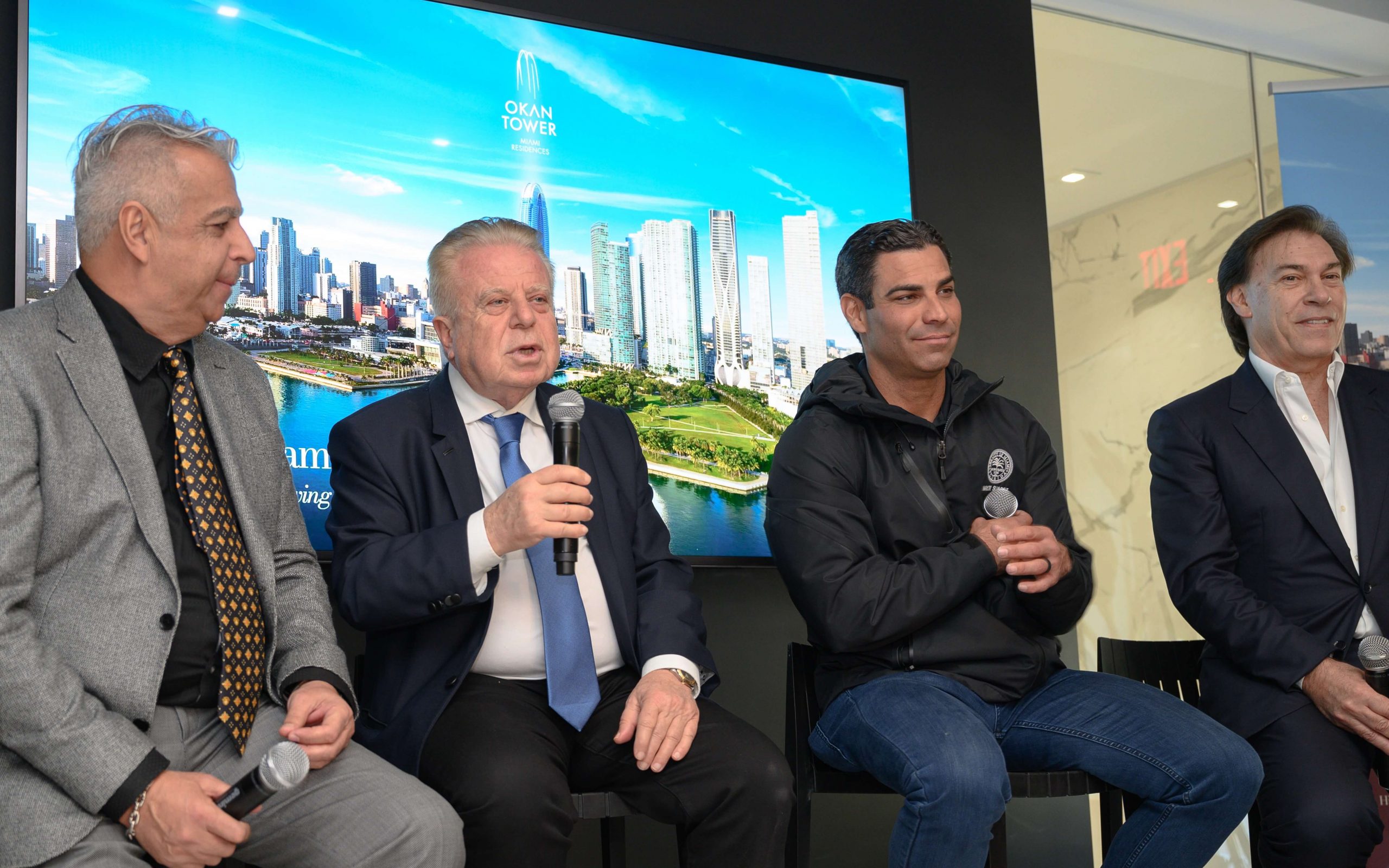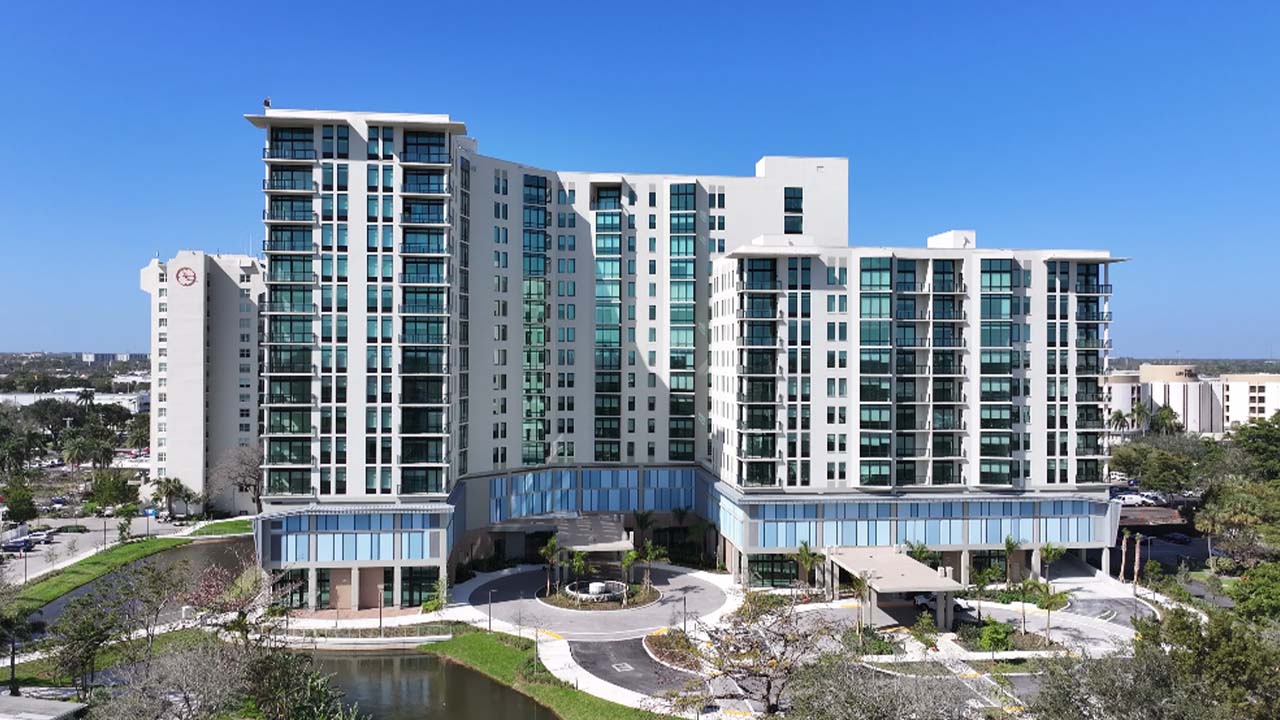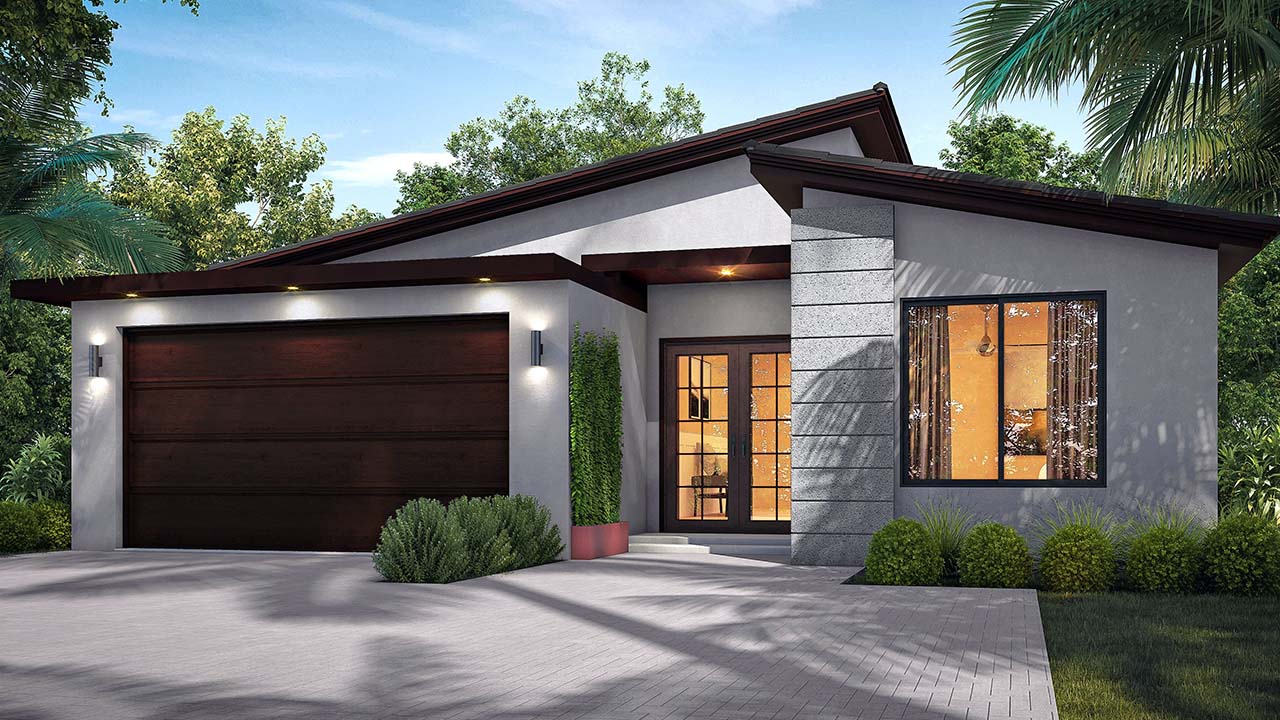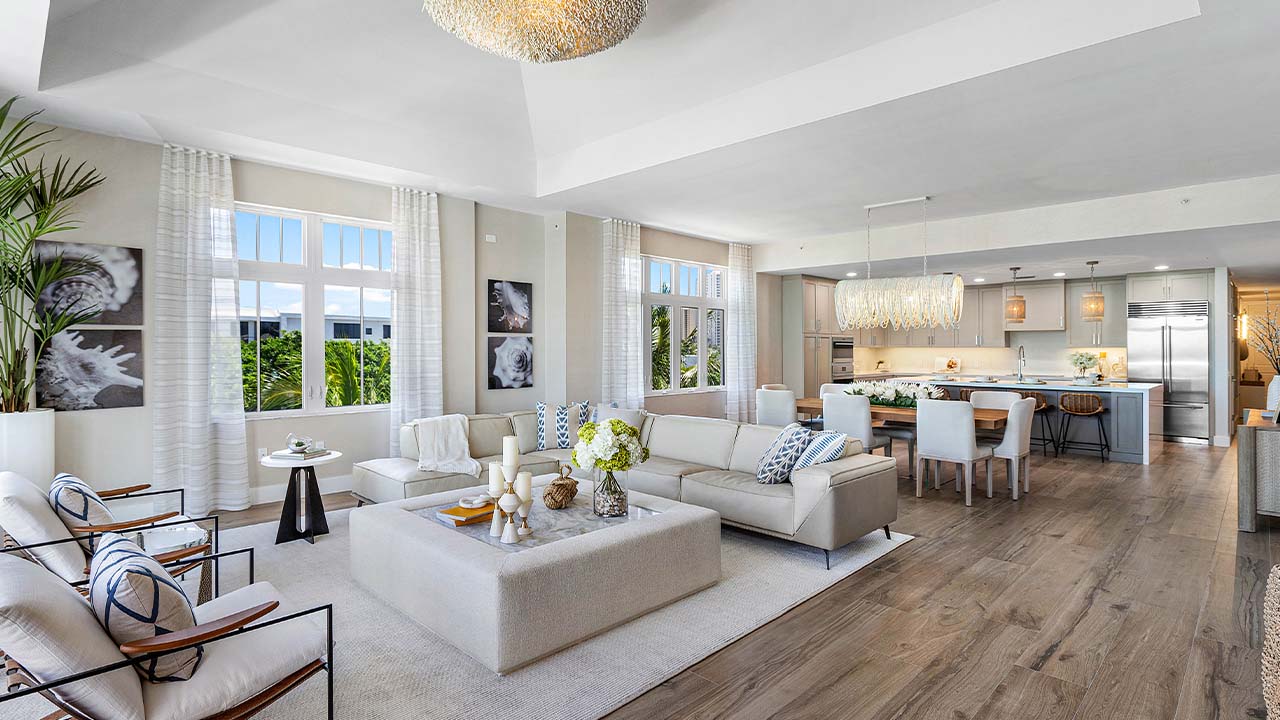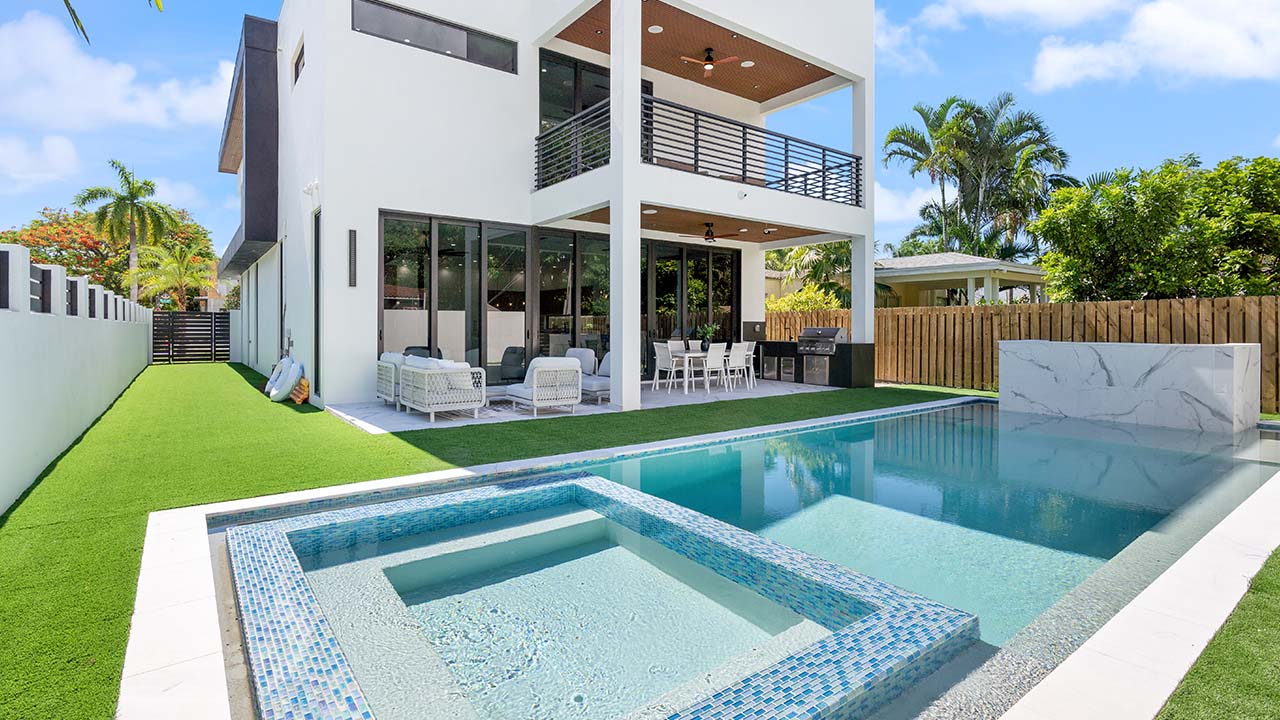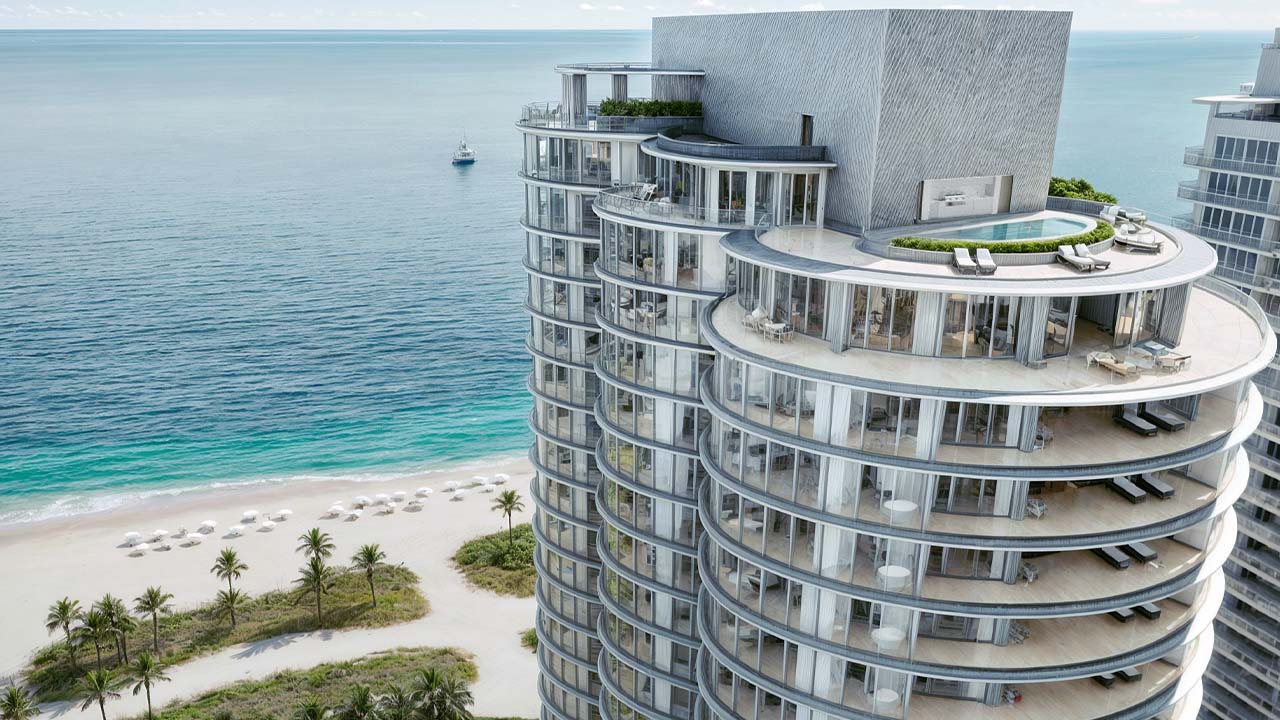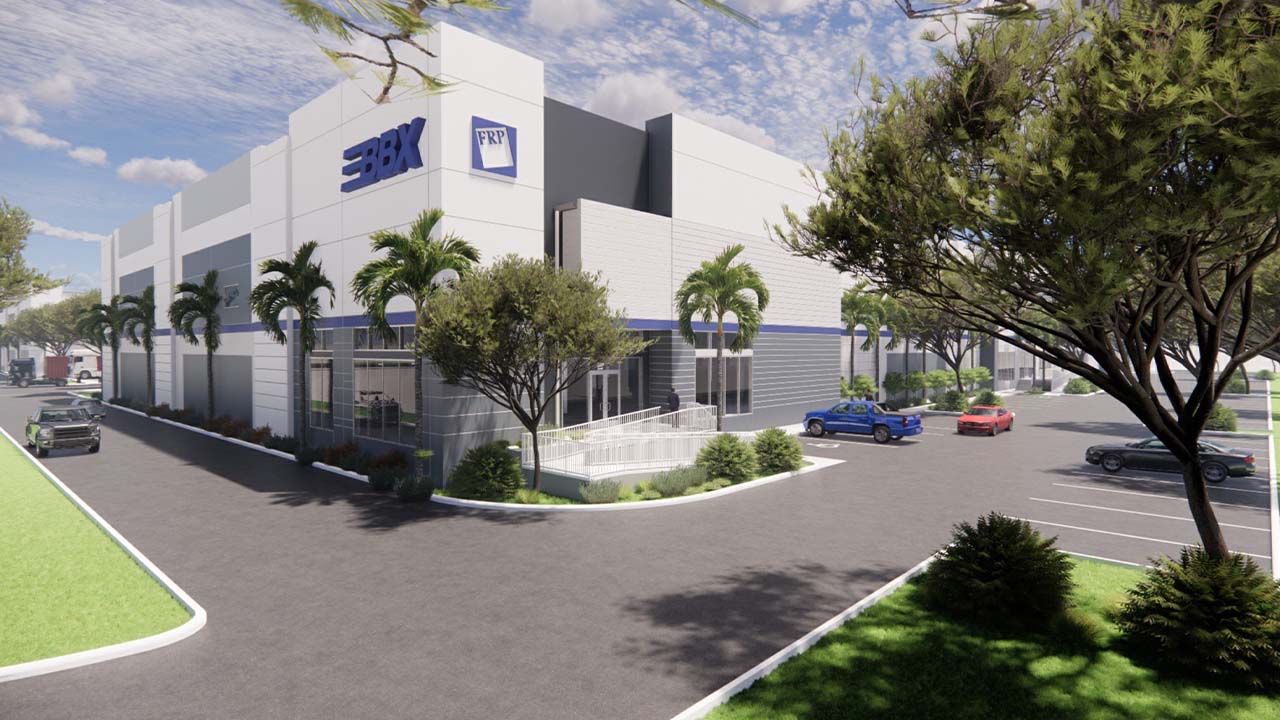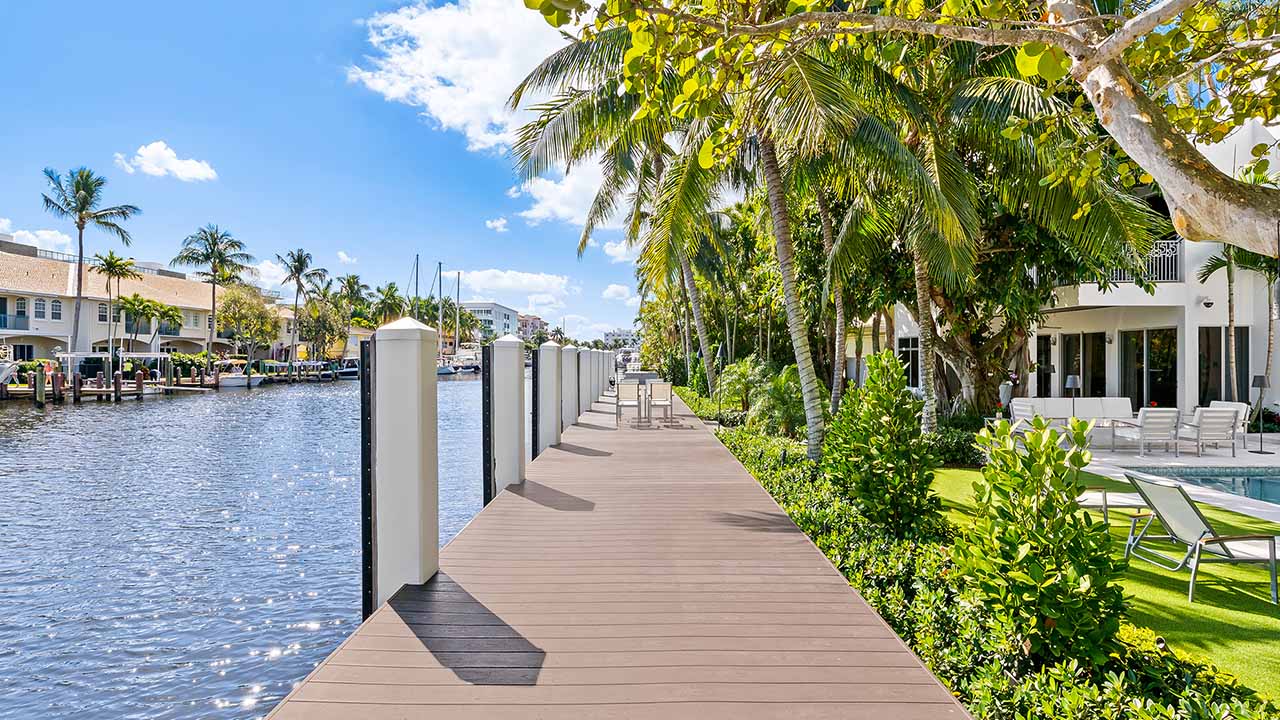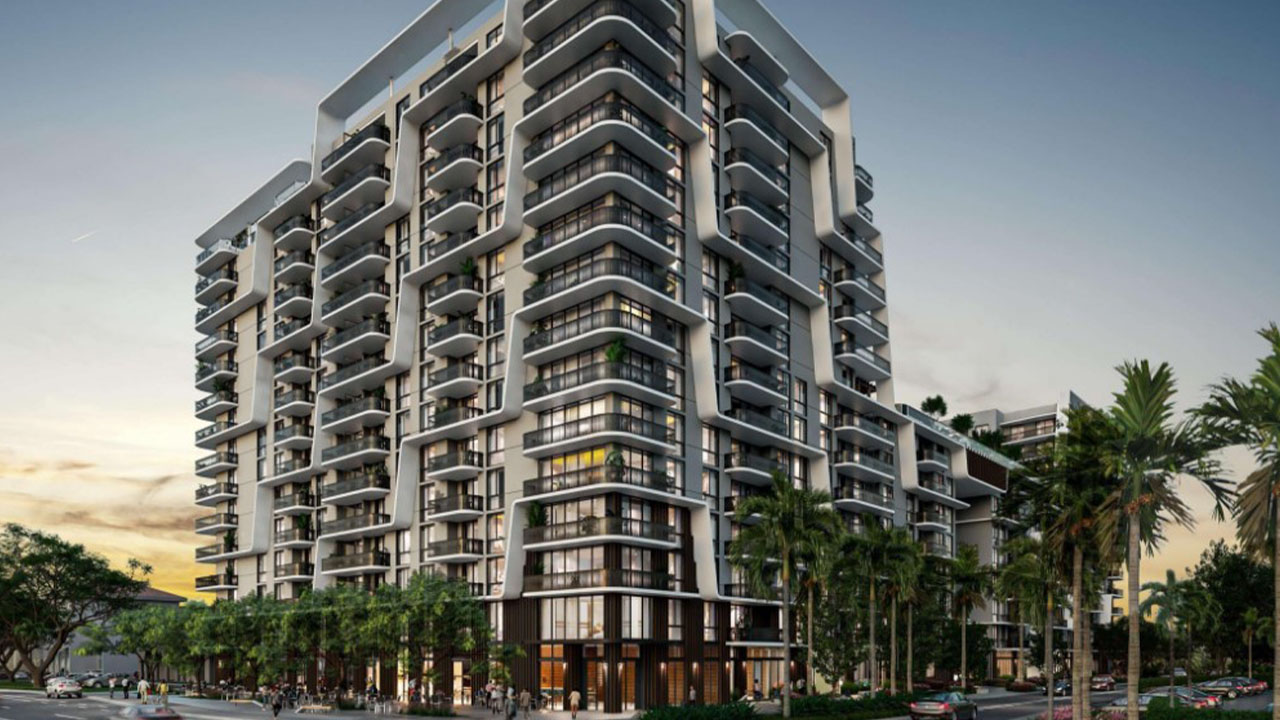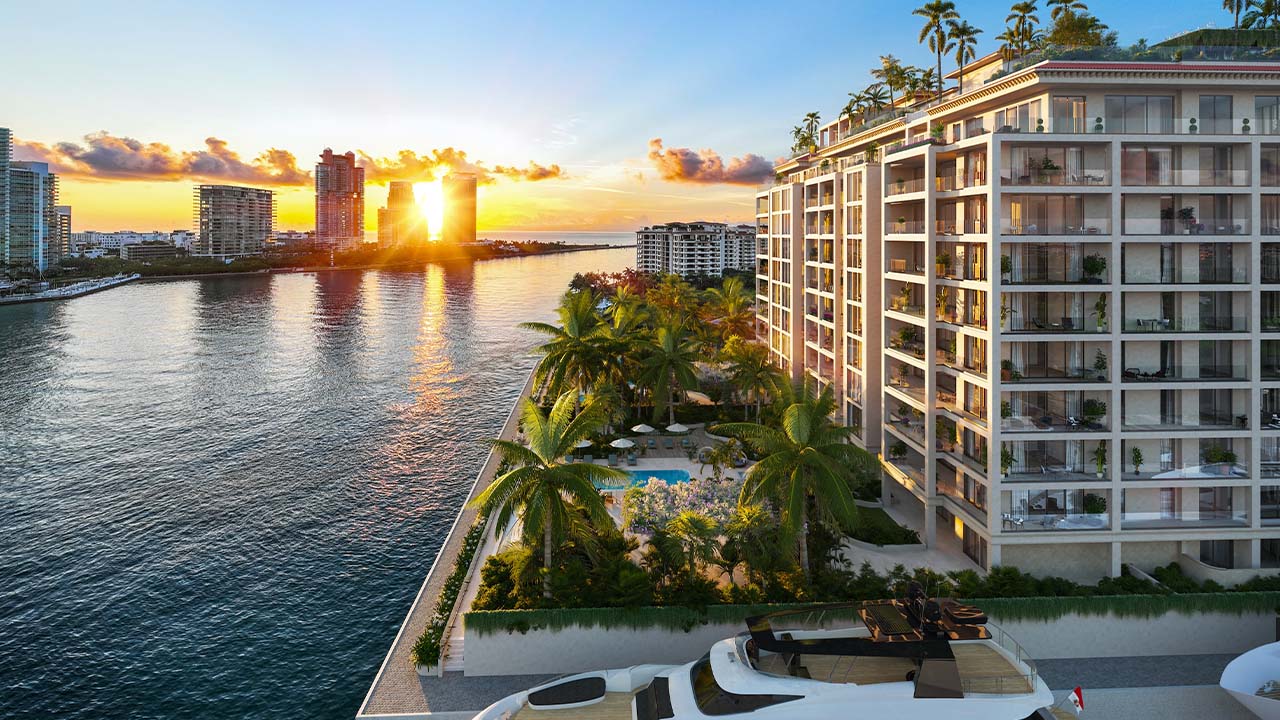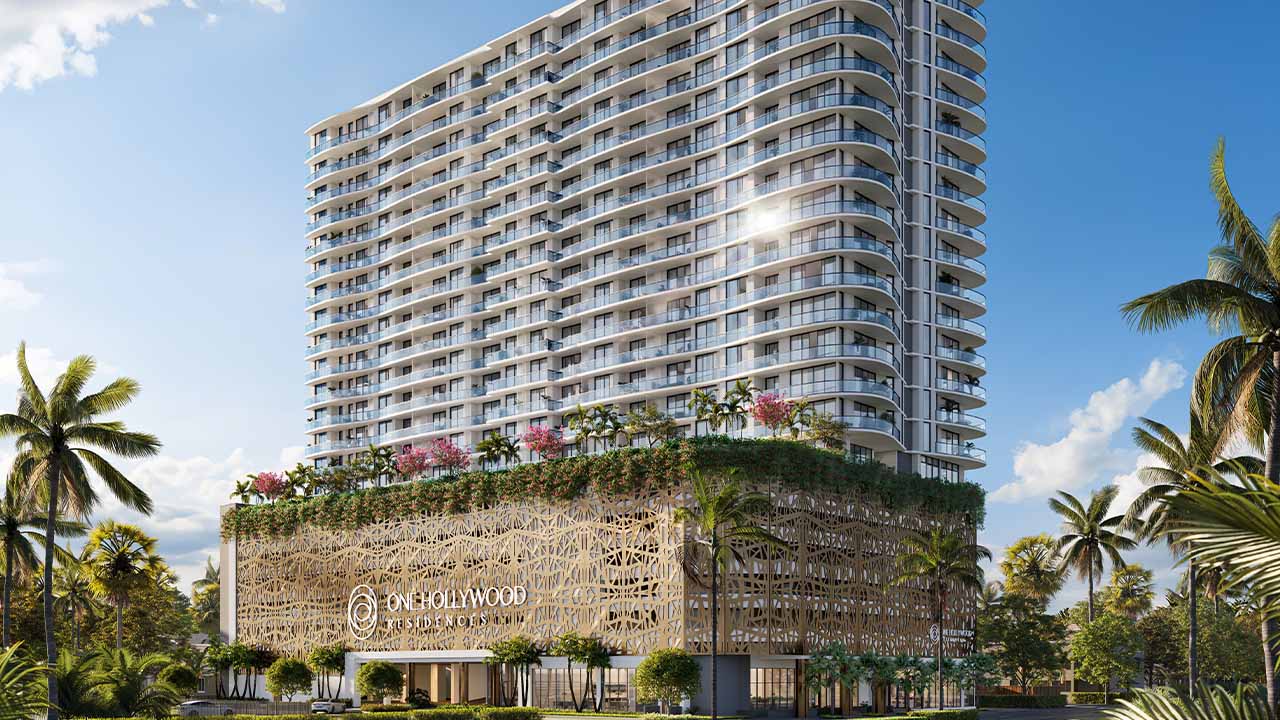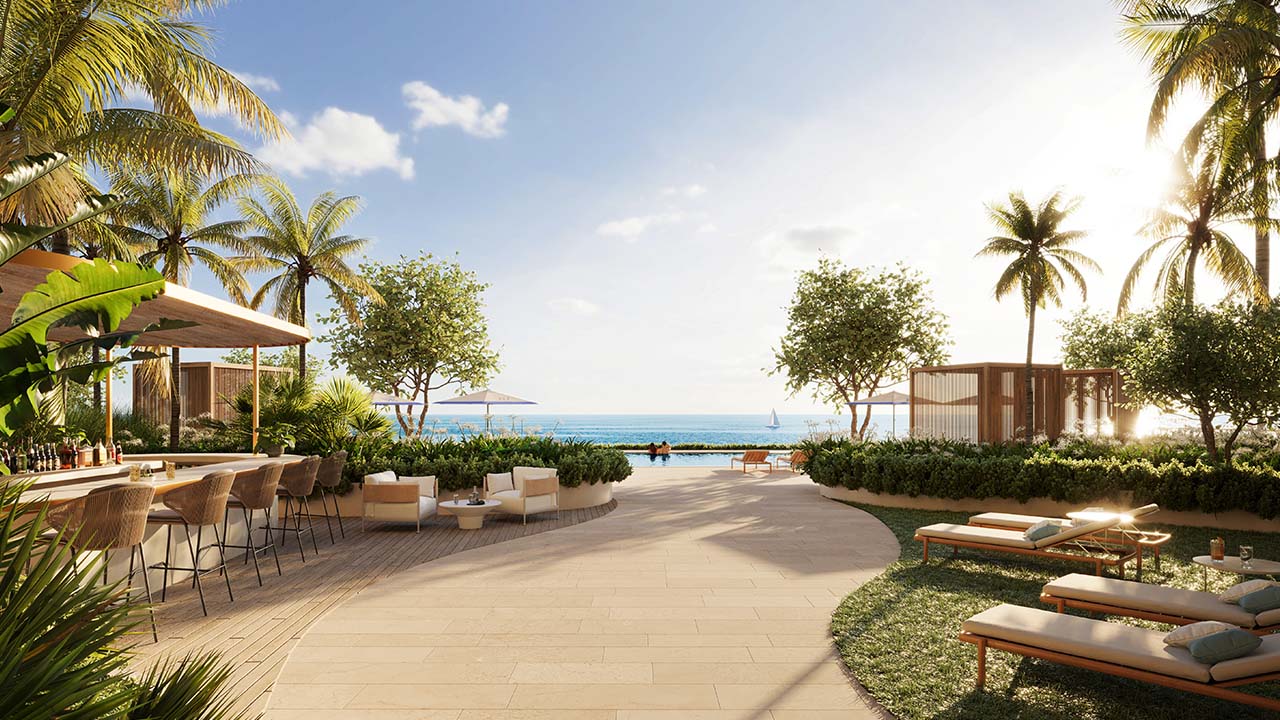Miami Mayor Francis Suarez is on charisma overdrive when he joins Bekir Okan, chairman of Okan Group; and Edgardo Defortuna, president and CEO of Fortune International Group, to celebrate the upcoming 70-story, mixed-use Okan Tower residential residences in downtown Miami.
It’s a striking scene as the youthful, well-coiffed mayor—in his usual black windbreaker and crisp jeans—sits among Okan and Defortuna—both formally dressed—in the Okan Tower’s new sales center (Fortune is the tower’s exclusive broker). The announcement of this major investment leads Suarez to launch into his well-practiced boosterism of Miami and his bullishness about the urban core. He says that Miami is No. 1 in tech job creation and tech job migration, and cites data from PitchBook about the city’s stunning growth in venture capital.
Defortuna chimes in: “Miami used to be a city of the future. Now it’s the city of the present. Everybody wants to be here. We travel all over the world to promote Miami and we sense that everybody wants a piece of Miami. And it’s not just waterfront anymore—as developers, it used to be that everyone tried to build on the waterfront.” Today, Defortuna says, Miami is far more than a resort city; it’s an urban entity to be reckoned with.
Given Miami’s dynamism, quality of life is clearly on the Suarez’s mind. “As we grow—and we’re growing tremendously—we have to plan,” he said. “What we’re seeing is a variety of things in the private sector and the public sector that give me hope that in the future, we won’t be overburdened relative to our growth. We have the most-ridden scooter ecosystems in the entire country, so that’s obviously working. On the public sector side, you see trolleys, which are free.”
To Suarez, transportation and breaking the dominant postwar urban/suburban divide is paramount to nurturing a livable city: “Before, if you wanted to have a big house, if you wanted to have a big yard, you would live in the suburbs and, unfortunately, have a long commute with a lot of traffic,” he says. “Now, we’re seeing what I call the 15-minute walkable city. Neighborhoods are being built as miniature cities. If you live in Coconut Grove, you can do everything in Coconut Grove—and you have three cities in downtown: this area, the core, which was traditionally known as Downtown; and a little bit north you have the Edgewater area; and you have Midtown. You can walk just about anywhere within those miniature cities—for people to work, to enjoy themselves, etc.”
The mayor called out two ambitious ideas to ease congestion in Miami: Elon Musk’s notion to build tunnels in the city, akin to the tunnels in Las Vegas that connect the major hotels and casinos (Suarez said that Musk’s company builds tunnels at 1/200th of the price of the tunnels in New York), and urban air mobility, which captures the imagination, to be sure. Suarez cites the traditional cost of urban transit: “In New York, it costs $2 billion a mile in transit. Even in our overground Metrorail, it’s around $250 to $500 million a mile in expense.” By contrast, he says, the air is free: “You don’t have to build anything on it, and you have the ability to move across the air.” If an urban network of flying vehicles seems fanciful, Suarez betrays zero skepticism.
The mayor who inspired San Francisco Mayor London Breed to send him a text that read, “Stop stealing my techies,” reverts to his mojo. “Our economy is becoming more tech-based whether we like it or not”—it’s been more than well-demonstrated that Suarez is in the former camp. “Technology is here to stay, so cities across America have two choices: They can pretend that it doesn’t exist and be afraid of that disruptive change, and run away from it—that’s one choice. Or we can embrace it and try to get ahead of it with such things as cryptocurrency to differentiate ourselves and tell the world we’re open for business—if you want the careers of today and tomorrow. We’re created thousands of high-paying jobs,” he insists, emphasizing the multiplier effect of those tech jobs, which lift up more than just the wage earner—it elevates families, not only significant others and children, but even unborn grandchildren. “It’s trigenerational,” he says. The term has the ring of something the mayor will be using a lot.
With the influx of new residents from the New York area and California, Suarez knows that well-heeled newcomers have questions about the state’s higher educational profile. “That’s another big issue that we’re working on—we’re working with some people on attracting partnerships with higher education institutions from Israel and the United States, and we’re reinforcing the current educational institutions that we have right now,” he says. “I think higher education is ripe for disruption, and you can classify educational institutions as a bit archaic, generally speaking.” He says satellite campuses of major out-of-state universities are on the menu.
Suarez ends on a self-referential note: “Miami is doing a phenomenal job—we’re all doing it together, from the Realtors who go out and evangelize to the world what we’re doing here, to the developers who risk their capital, to the banks who finance their projects, to the mayor who goes on Twitter and talks about it constantly. We all have a role to play, and, frankly, what’s exciting to me is that it’s the first time in my life that I feel, in the city I was born in and that I love, that we’re all moving in the same direction. We all want to see things improve and we want to metamorphosize into the next level and create global dominance. We’re the epicenter of where capital decisions are being made. We’re quickly emerging as the world player.”



